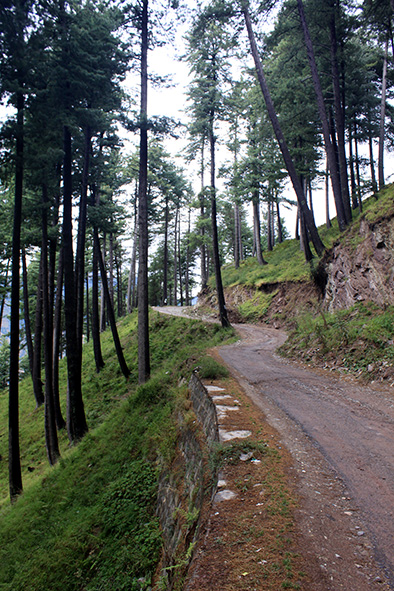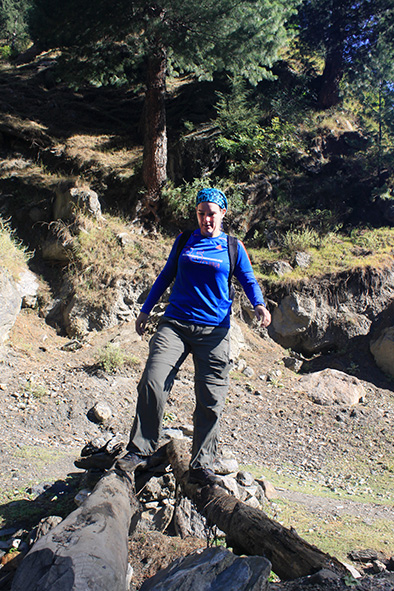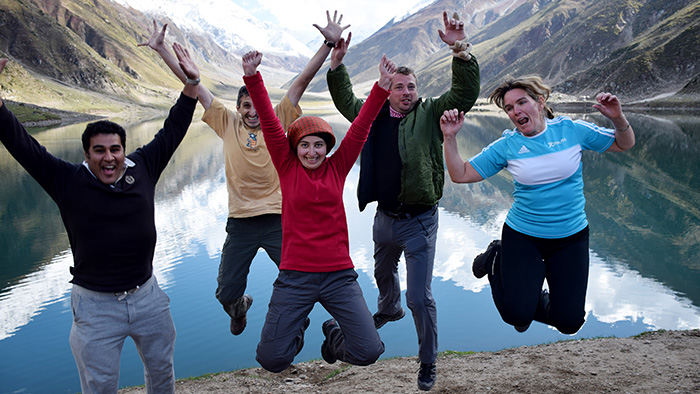If you are a long-term reader of OutdoorUAE magazine, you already know how I hate travel agency packaged trips. So when Ahsan, the organiser of the Dubai Equestrian Group on Meetup.com proposed to make us discover the less-travelled roads of Pakistan during the Eid break, he had my full attention.
The plan was to visit Gilgit, Hunza Valley, the Fairy Meadows and trek to the 3800m base camp of Nanga Parbat culminating at 8,125 m. Gilgit is in the north of Pakistan in the foothills of the northern Himalayas, 100km away from Afghanistan; 150km away from Tajikistan and 150km away from China. So our party of five – Linda from the Netherlands, Khadija from Morocco, Amr from Syria, Ahsan from Pakistan and myself (and Marcel of course) landed in Islamabad on Monday 21st in the evening. It started raining as soon as we exited the terminal. As the flight to Gilgit was changed from 7:00 a.m. to 5:00 a.m., we cancelled the hotel night and head to Monal, a very nice restaurant in the hills, overlooking Islamabad. Back at the airport, they told us that the flight is eventually at 7:00 a.m. and that we cannot check-in yet. The pavement in front of the domestic terminal made an acceptable bed for two hours.

Armed with our boarding passes, we cannot wait for the real stuff to start. The risk of flying to mountainous destinations, particularly as winter is approaching, is the unpredictability of the weather. And unfortunately, our flight is cancelled due to high winds around Gilgit. We are disappointed but not angry. Flying between peaks of 6-7,000m is no kindergarten stuff and the pilot knows better. If he decides not to fly, he has good reasons. So we have the choice in keeping faith that next day’s flight will not be cancelled or fall back to plan B prepared by Ahsan.
Plan B is unanimously decided. It consists of driving eight to nine hours to Naran, Kaghan Valley via Abbottabad (the last known residence of Osama Bin Laden), Mansehra and Balakot. Just the time to charter a minibus and we hit the road, still under uninterrupted rain. We arrive at the hotel in Khanian at 1800m at 6:30 p.m. after miles and miles of a winding mountain road, 28 hours after leaving home. The least we can say is that we deserve the right to visit the place… and the right to a shower and a bed! The wooden construction nestled in the trees on the flank of the hill is really nice and far better than the many soulless hotels we have seen on the way.

On the 3rd day; and the first real day of activity, we headed to Shogran at 2,350m where we dropped the bus for antique Jeeps that made my 1989 Land Rover looks like it is just out of the showroom. They take us to the mountain village of Paye at 3,070m via a track that would deter many off-roading enthusiasts. I hope that one day I can come back with my own car. After waiting for the rain to (nearly) stop with a cup of tea, we started walking – and horse riding for some of us – through the meadows towards the base camp (3,245m) of Makra Peak, culminating at 3,885m. We are rewarded by a small piece of blue sky, the first one since we left Dubai, before we needed to revert to the Jeeps to go back to the valley before dark. The track is rock ‘n roll enough in daylight! On the way back to the hotel, we stopped at one of the numerous places selling trouts from the river. We discovered the trout masala – fried to the bones like most of the food in the region, but nevertheless a very good and very local dish. And then we came back in time to enjoy a hot shower with firewood-heated water.
On the second day on site, we headed north towards Naran, from where we hiked to Saif-ul-Muluk Lake. This is a very deep valley where the ridges sometimes culminate 2,000m above the river. Villages are scattered along the river and settlements cover the flanks to cultivate the small terrace fields patiently built on the steep sides. Wind has blown during the night and there is not one cloud in the sky. The neighbouring peaks are covered by fresh snow and the views are beautiful, we can only enjoy the landscape while the driver has to pay attention to the rocks and mudslides that covered the road due to the rain of the past few days.
Once in Naran, at 2,475m, we started our hike towards the lake at 3,245m. What a change after all the fog and the rain of the day before! They have built a new road for 4×4 vehicles to reach the lake, and we followed the old one. We went through a village where cinder blocks, corrugated steel sheets and plastic covers have not yet replaced the traditional building materials like stone and wood; it’s becoming rare on the planet. The only hints that we were in the 21st century are the small solar panels on the roofs. We cover the distance and the elevation in two and a half hours and are rewarded by an amazing view. Saif-ul-Maluk with this weather is just out of this world and that view justified the trip. You wouldn’t be honest if you were telling me that it is the image you have in mind when you think of Pakistan. We spent the afternoon there instead of trekking further. Down in Naran, we are asked by the police to go back to our hotel. They are a bit nervous to have foreigners in their area of responsibility, as they want to spend a quiet Eid. We were done anyway.
On the next morning, before hitting the road back, we just walked one hour along the river, wishing an Eid Mubarak to all the villagers going to the mosque. It is always a nice atmosphere to experience, wherever in the Muslim world. On the way back to Islamabad, our driver invited us for lunch at his place, the occasion for us to experience Pakistani hospitality in his majilis. The mutton (sacrificed in the morning) and rice served was one of the best dishes we had during this trip.

All in all, that was a nice way to discover the hidden gems of Pakistan in a safe way, far from the preconceived idea the likes of CNN can give of this country. Thanks again Ahsan for organizing the trip and let’s hope we can do Plan A soon after winter!
Patrice (and Marcel of course)
Words + Photos By: Patrice de Wergifosse

